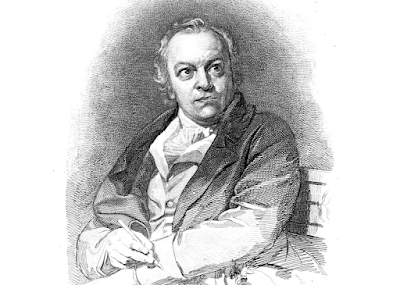
In the late 1770s, he worked with a printmaker for drawing murals and monuments in Westminster Abbey. The artistic abilities, his whimsical tendencies and the talent for prose all beautifully came together later for a printing process , sometimes known as ‘illuminated printing method’ he invented himself in 1789. Here he experimented with combining poetry and image. The result were works of art such as ‘The Marriage of Heaven and Hell’, ‘Visions of the Daughters of Albion’, ‘Jerusalem’, and ‘Songs of Innocence and Experience’.

Image - Title Page, from Marriage of Heaven and Hell - William Blake. Copy printed -1794

Image - William Blake - Visions of the Daughters of Albion. This work has been described as Blake's critique not only of sexual oppression, but of slavery and colonialism as well. ( source Morgan Library)

Image - In Songs of Innocence and of Experience, perhaps his most famous collection of poems, he investigates, as he put it in the subtitle, 'the two contrary states of the human soul'.

The Book of Thel is Blake's first imagery book, which came out of his and the world’s first ever groundbreaking ‘illuminated printing method’ was written in lines of fourteen syllables. This was a measure used in most of his subsequent books.
Thel, a virgin shepherdess burdened by her sense of mortality, seeks meaning for her life by talking with several creatures—a lily, cloud, worm, and clod of clay. These speaking symbols of life's transience are satisfied with their lot because all believe themselves to be part of natural cycles related through self-sacrifice to a higher purpose. On the final plate, Thel comes to her grave and hears her own unanswered questions redolent with fears of both death and sexuality. This voice, and Thel's flight from it, indicate either her failure to accept the harsh facts of life or the failure of her interlocutors' philosophy to satisfy the human desire for transcendental truths.
Source - RPO library archives


No comments:
Post a Comment